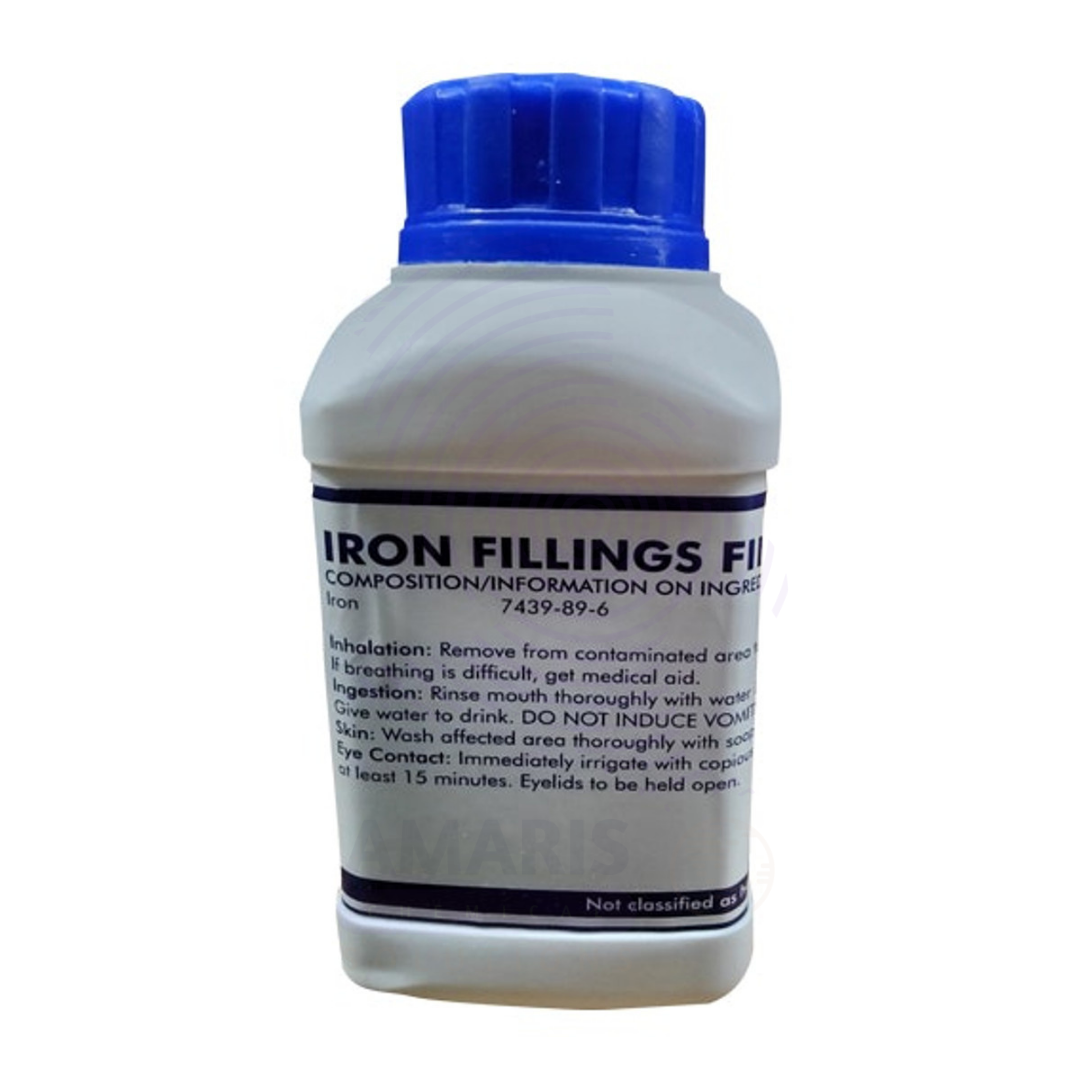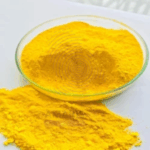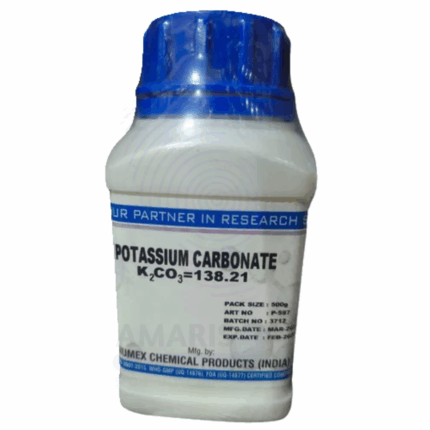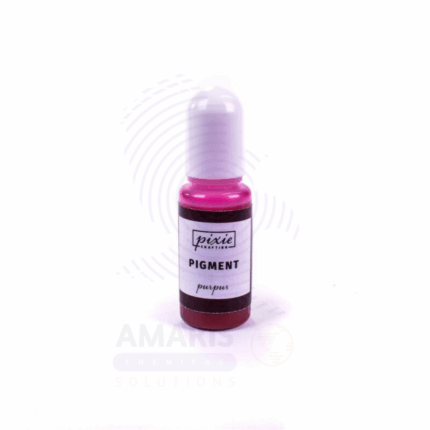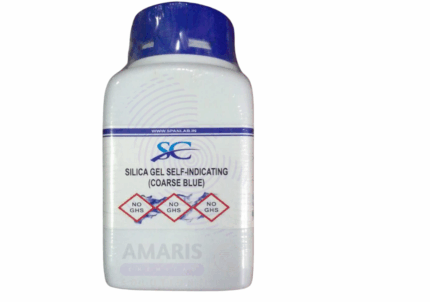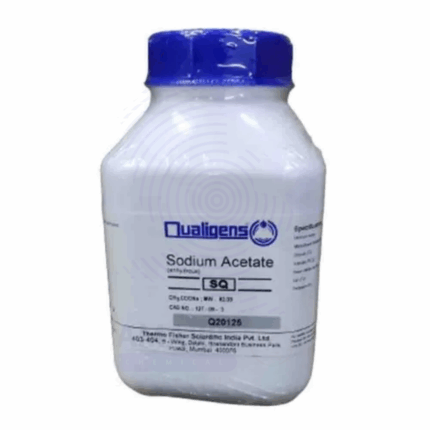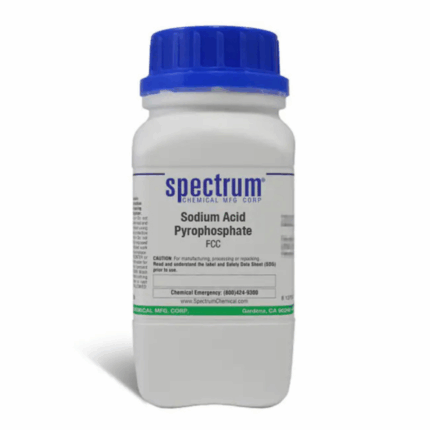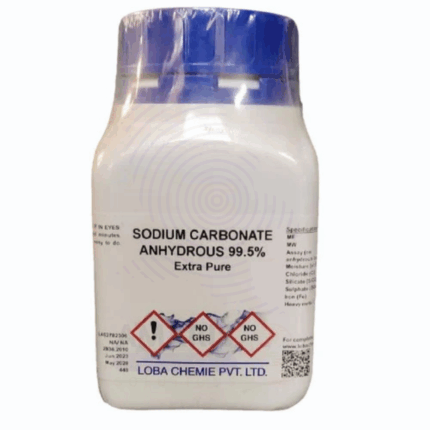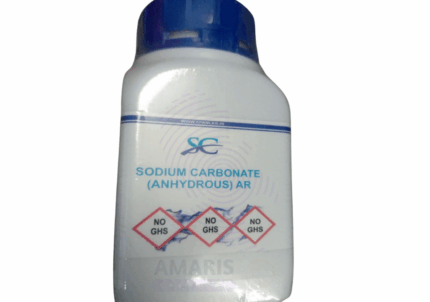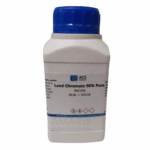
Iron Fillings Extra Pure
$ 19.75 Original price was: $ 19.75.$ 19.67Current price is: $ 19.67.
Iron Fillings Extra Pure consist of finely divided iron particles produced from high-grade iron, offering high purity and excellent reactivity. These filings are widely used in educational laboratories for demonstrating magnetic field lines and for experiments involving magnetism and ferromagnetism. In chemical reactions, they serve as a convenient source of iron for redox and displacement reactions. Their consistent particle size and minimal impurities make them suitable for analytical applications, metallurgical studies, and various industrial processes where controlled iron content is required. Iron fillings should be stored in a dry environment to prevent oxidation and rust formation.
Iron Fillings Extra Pure
Primary Uses
- Magnetism Demonstrations:
Widely used in physics labs to visually demonstrate magnetic field lines and the effect of magnetic poles using magnets and iron filings. - Redox and Corrosion Experiments:
Used in chemistry labs to study oxidation, reduction, and rust formation under various atmospheric or chemical conditions. - Thermite Reactions:
Acts as the iron source in exothermic thermite experiments when reacted with aluminum powder, producing molten iron and demonstrating energetic redox chemistry.
Secondary Uses
- Catalytic Studies:
Used in reaction kinetics or catalysis experiments as a surface for specific redox or decomposition reactions (e.g., in hydrogen peroxide breakdown). - Separation Techniques Practice:
Employed in mechanical separation exercises, particularly in educational settings to show how magnetic separation works in mixtures. - Material Science Education:
Utilized for metal analysis, structure comparison, and particle morphology studies in metallurgy and materials science curricula.
| PACK SIZE |
250 grams Plastic Tin |
|---|
1. Basic Identification Attributes
- Product Name: Iron Fillings
- Chemical Name: Iron (Fe)
- Grade: Extra Pure
- Formula: Fe
- Appearance: Gray metallic particles or shavings
- Odor: Odorless
2. Composition
- Iron (Fe): ≥99% (metallic form)
- Impurities: Trace elements such as carbon, manganese, or silica (negligible in Extra Pure grade)
- Particle Size: Fine, irregular metallic filings
3. Physical & Chemical Properties
- Melting Point: ~1538 °C
- Boiling Point: ~2862 °C
- Density: ~7.87 g/cm³
- Solubility: Insoluble in water
- Magnetism: Strongly magnetic
- Stability: Stable in dry air but oxidizes slowly when exposed to moisture
4. Safety & Hazard Attributes
- GHS Classification:
⚠️ Not classified as hazardous, but may pose a dust or fire hazard if particles are airborne. - PPE Requirements:
- Safety goggles
- Gloves
- Dust mask or respirator (when grinding or in powder form)
- Lab coat
- First Aid Measures:
- Inhalation: Move to fresh air; seek medical attention if irritation occurs
- Skin Contact: Wash with soap and water
- Eye Contact: Rinse with water for several minutes
- Ingestion: Rinse mouth; seek medical help
- Fire Hazards:
- Finely divided filings may be flammable; use dry sand or Class D fire extinguisher
- Avoid water on burning metal
5. Storage & Handling Attributes
- Storage Conditions:
- Store in a dry, airtight container
- Avoid exposure to moisture to prevent rusting
- Keep away from strong acids and oxidizers
- Handling Tips:
- Handle with care to avoid creating fine airborne dust
- Clean up spills promptly to avoid slipping or contamination
6. Laboratory Applications
- Primary Uses:
- Demonstrating magnetic properties of metals
- Reactivity experiments with acids (e.g., HCl to form FeCl₂ and H₂ gas)
- Redox reaction demonstrations
- Synthesis of iron salts
- Education in electrochemical series and single displacement reactions
- Secondary Uses:
- Simulations of meteorite or planetary core material
- Visualizing magnetic field lines when used with magnets
- Component in thermite mixtures for combustion studies
- Creating iron oxide pigments via controlled oxidation
SAFETY PRECAUTIONS
Personal Protective Equipment (PPE):
- Wear a lab coat, nitrile gloves, and safety goggles.
- Use a dust mask or respirator if dust or fine particles are generated.
Handling:
- Avoid creating or inhaling dust.
- Keep away from strong oxidizers and acids.
- Avoid contact with skin and eyes.
- Wash hands thoroughly after handling.
Storage:
- Store in a dry, cool, and well-ventilated place.
- Keep the container tightly closed to avoid moisture exposure.
- Avoid contact with moisture to prevent rusting.
FIRST AID MEASURES
Inhalation:
- Move to fresh air.
- Seek medical attention if respiratory symptoms persist.
Skin Contact:
- Wash skin with soap and water.
- Remove contaminated clothing.
- Get medical advice if irritation occurs.
Eye Contact:
- Rinse cautiously with water for several minutes.
- Remove contact lenses if present and easy to do.
- Continue rinsing and seek medical help if needed.
Ingestion:
- Rinse mouth with water.
- Do not induce vomiting.
- Seek medical attention if large quantities are ingested or symptoms develop.
FIRE FIGHTING MEASURES
Flammability:
- Iron filings are not flammable but may ignite when finely divided and exposed to flame or high heat.
Extinguishing Media:
- Use dry sand, Class D fire extinguisher, or dry powder.
- Do NOT use water or CO₂, as it may react with hot metal.
Hazardous Combustion Products:
- May emit iron oxides.
Firefighter Protection:
- Wear full protective gear and a self-contained breathing apparatus (SCBA).
Avoid using water-based extinguishers on burning metal.


 Preservatives(food)
Preservatives(food) Flavor Enhancers
Flavor Enhancers Acidulants
Acidulants Sweeteners
Sweeteners Antioxidants
Antioxidants Colorants(food)
Colorants(food) Nutraceutical Ingredients (food)
Nutraceutical Ingredients (food) Nutrient Supplements
Nutrient Supplements Emulsifiers
Emulsifiers
 Collectors
Collectors Dust Suppressants
Dust Suppressants Explosives and Blasting Agents
Explosives and Blasting Agents Flocculants and Coagulants
Flocculants and Coagulants Frothers
Frothers Leaching Agents
Leaching Agents pH Modifiers
pH Modifiers Precious Metal Extraction Agents
Precious Metal Extraction Agents
 Antioxidants(plastic)
Antioxidants(plastic) Colorants (Pigments, Dyes)
Colorants (Pigments, Dyes) Fillers and Reinforcements
Fillers and Reinforcements Flame Retardants
Flame Retardants Monomers
Monomers Plasticizers
Plasticizers Polymerization Initiators
Polymerization Initiators Stabilizers (UV, Heat)
Stabilizers (UV, Heat)
 Antifoaming Agents
Antifoaming Agents Chelating Agents
Chelating Agents Coagulants and Flocculants
Coagulants and Flocculants Corrosion Inhibitors
Corrosion Inhibitors Disinfectants and Biocides
Disinfectants and Biocides Oxidizing Agents
Oxidizing Agents pH Adjusters
pH Adjusters Scale Inhibitors( water)
Scale Inhibitors( water)
 Antioxidants(cosmetic)
Antioxidants(cosmetic) Emollients
Emollients Fragrances and Essential Oils
Fragrances and Essential Oils Humectants
Humectants Preservatives
Preservatives Surfactants(cosmetic)
Surfactants(cosmetic) Thickeners
Thickeners UV Filters
UV Filters
 Fertilizers
Fertilizers Soil Conditioners
Soil Conditioners Plant Growth Regulators
Plant Growth Regulators Animal Feed Additives
Animal Feed Additives Biostimulants
Biostimulants Pesticides (Herbicides, Insecticides, Fungicides)
Pesticides (Herbicides, Insecticides, Fungicides)
 Active Pharmaceutical Ingredients (APIs)
Active Pharmaceutical Ingredients (APIs) Excipients
Excipients Solvents(pharmaceutical)
Solvents(pharmaceutical) Antibiotics
Antibiotics Antiseptics and Disinfectants
Antiseptics and Disinfectants Vaccine Adjuvants
Vaccine Adjuvants Nutraceutical Ingredients (pharmaceutical)
Nutraceutical Ingredients (pharmaceutical) Analgesics & Antipyretics
Analgesics & Antipyretics
 Analytical Reagents
Analytical Reagents Solvents(lab)
Solvents(lab) Chromatography Chemicals
Chromatography Chemicals Spectroscopy Reagents
Spectroscopy Reagents microbiology-and-cell-culture-reagents
microbiology-and-cell-culture-reagents Molecular Biology Reagents
Molecular Biology Reagents Biochemical Reagents
Biochemical Reagents Inorganic and Organic Standards
Inorganic and Organic Standards Laboratory Safety Chemicals
Laboratory Safety Chemicals Specialty Laboratory Chemicals(Special Laboratory Equipment)
Specialty Laboratory Chemicals(Special Laboratory Equipment)
 Demulsifiers
Demulsifiers Hydraulic Fracturing Fluids
Hydraulic Fracturing Fluids Scale Inhibitors(oil)
Scale Inhibitors(oil) Surfactants(oil)
Surfactants(oil) Drilling Fluids
Drilling Fluids
 Dyes and Pigments
Dyes and Pigments Bleaching Agents
Bleaching Agents Softening Agents
Softening Agents Finishing Agents
Finishing Agents Antistatic Agents
Antistatic Agents
 Admixtures
Admixtures Waterproofing Agents
Waterproofing Agents Sealants and Adhesives
Sealants and Adhesives Curing Compounds
Curing Compounds Concrete Repair Chemicals
Concrete Repair Chemicals Anti-Corrosion Coatings
Anti-Corrosion Coatings
 Surfactants(cleaning)
Surfactants(cleaning) Builders
Builders Enzymes
Enzymes Solvents (Cleaning)
Solvents (Cleaning) Fragrances
Fragrances
 Electronic Chemicals
Electronic Chemicals Catalysts
Catalysts Lubricants
Lubricants Photographic Chemicals
Photographic Chemicals Refrigerants
Refrigerants Automotive chemicals
Automotive chemicals Pyrotechnic Chemicals
Pyrotechnic Chemicals
 Biodegradable Surfactants
Biodegradable Surfactants Bio-based Solvents
Bio-based Solvents Renewable Polymers
Renewable Polymers Carbon Capture Chemicals
Carbon Capture Chemicals Wastewater Treatment Chemicals
Wastewater Treatment Chemicals
 Pigments
Pigments Solvents(paint)
Solvents(paint) Specialty Coatings
Specialty Coatings Binders/Resins
Binders/Resins Additives
Additives Driers
Driers Anti-Corrosion Agents
Anti-Corrosion Agents Functional Coatings
Functional Coatings Application-Specific Coatings
Application-Specific Coatings
 Fresh Herbs
Fresh Herbs Ground Spices
Ground Spices Whole Spices
Whole Spices Spice Blends
Spice Blends Dried Herbs
Dried Herbs
 Leavening Agents
Leavening Agents Dough Conditioners
Dough Conditioners Flour Treatments
Flour Treatments Fat Replacers
Fat Replacers Decoratives
Decoratives Preservatives(baking)
Preservatives(baking)
 Plasticizers & Softeners
Plasticizers & Softeners Reinforcing Agents
Reinforcing Agents Adhesion Promoters
Adhesion Promoters Vulcanizing Agents
Vulcanizing Agents Antidegradants
Antidegradants Blowing Agents
Blowing Agents Fillers & Extenders
Fillers & Extenders Accelerators & Retarders
Accelerators & Retarders